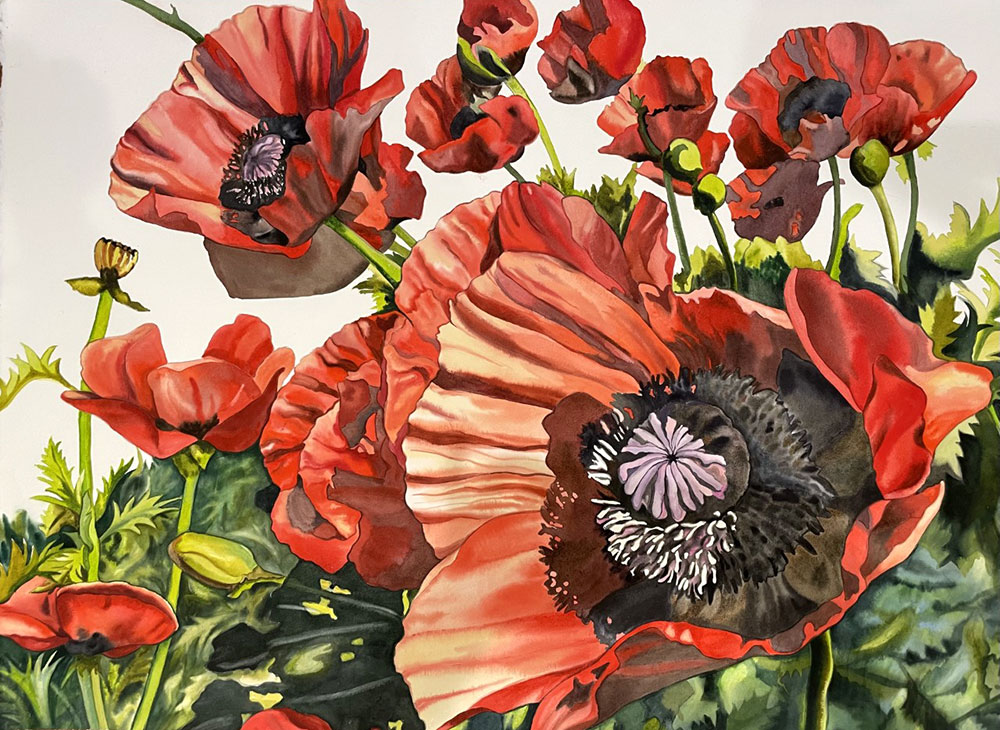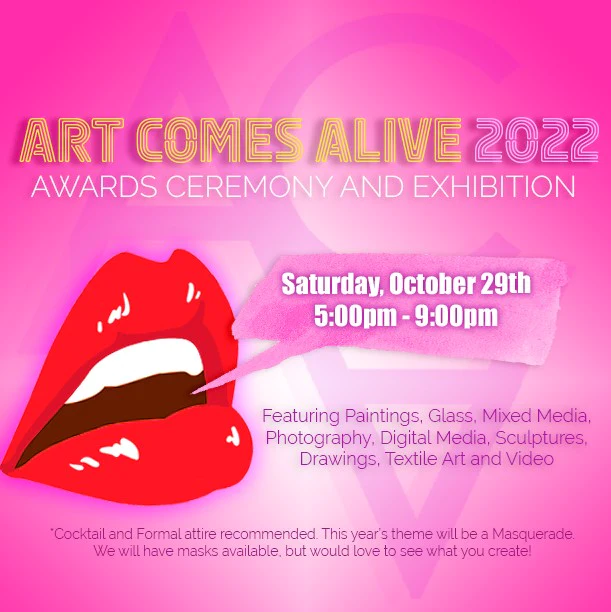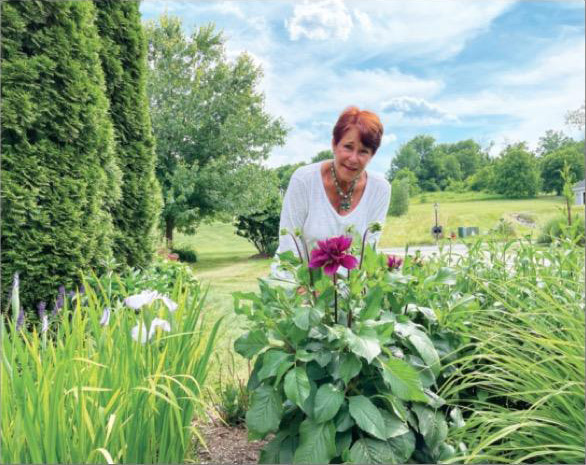My husband Richard and I were invited to travel to Russia on a Medical and Art humanitarian mission with an organization called the “Novgorod Alliance.” The Alliance has traveled to the same city in Russia,Veliky Novgorod, for the past 12 years building relationships of trust and friendship with the Novgorod community by sharing information and expertise in medical arts and now the fine and applied arts.
Two years ago Judy Kramer, a photographer and 12-year traveler to Novgorod, had the idea of bringing a group of US artists to Novgorod. Judy’s idea was to have an exhibition of American artists’ work. The artists were asked to plan workshops and demonstrations of their techniques for groups of children, teachers and artists within the Novgorod community.
I am a watercolor artist and was lucky enough to be one of the 5 American women artists invited to participate in this effort to promote mutual understanding of our two countries. The other artists were Judy Kramer, photographer, Bobbie Abrams, sculptor, Judy Lyons-Schneider Subotky painter/collage artist and Jane McDowell, fiber artist. I had never participated in a cultural exchange so the concept of this was very exciting to me as a person and an artist.
All of the artists, with the exception of Judy Kramer, didn’t quite know what to expect. Deciding what artwork to bring for the exhibition was determined by the size and weight allowed by the airlines. It turned out to be a real engineering project, in which my husband’s help was invaluable. International travel allows a maximum of 70 lbs. Per bag with an overall dimension of 62 inches in length, height and width. I decided to bring 7 giclee prints of my watercolors (which are usually much, much larger) when they were mounted on foam core, matted, and under Plexiglas measured 29 x 24 and weighed close to 70 lbs in their special reinforced portfolio. They had to survive 4 flights going and 4 returning…come to think of it, so did I.
The hanging of our exhibition at the Museum of Fine Arts took place on Monday since the museum was closed that day. The institution that would house our artwork impressed all of us; it is truly a world-class museum. It was fun to see the promotional posters of our show “Artistic Passions; 5 American Women” plastered all over Novgorod .
Boris Nepomnyashchy, head of the Novgorod Artist Union greeted us. He was a wiry eccentric looking gentleman, dressed all in black from his hat to his shoes. His mere presence said “artist”. Boris is a “National artist of Russia ” and in the past has traveled to the US as part of “Art Workshops” at the International Children’s Festival at Wolf Trap Farm Park in Virginia . A group of Russian artists helped us hang our show. We immediately felt welcomed and were very excited about the magnificent space our work would be hanging in.
We proceeded to uncrate, unbubble wrap, and peel off the plexi protector. Judy had come up with a hanging system of clips for each corner of our work, that when tied with string, made a professional presentation and eliminated the need for bulky heavy frames. As we assembled our work and looked around the room we could all see that it was going to be a magical show. Most of us had not met before and I think we were all thrilled with the quality of our fellow artists work and the way it all worked together. Little did we know that by the end of the week how we were going to grow as artists, people and friends.
The opening reception of our exhibition was both gratifying and overwhelming. As we entered the museum, TV and news reporters greeted us. Our exhibition hall was filled with people I didn’t know including the director of the museum, who is also one of the directors of the Hermitage Museum in St. Petersburg . Artists, students, and people from the Novgorod Medical Alliance came to view our exhibition. After the speeches and presentations of flowers, art students and artists who wanted to know about my technique and inspiration surrounded me. The experience for me was both humbling and validating at the same time. I wished that I could have been able to bring my original paintings to Russia .
For 6 months I had to prepare for the classes I would be teaching. I had to write a lesson plan and gather materials for an audience of children possibly from age 8 to 15. These plans and materials had to be translated into Russian far in advance. This is what I submitted:
Children’s Workshop — Watercolor Sampler
Provided by artist:
Materials needed- provided by artist:
Watercolor paper, samples 300 weight
Watercolor paint sets
Watercolor wash brushes
Watercolor rounds and flat brushes
Coarse salt
Straws
Pencils
Styrofoam meat trays
Saran Wrap
Needed at site in Russia :
2 or 3 hair dryers
Water containers (to wash brushes and mix paints)
Description of project:
I will use the ” wet on wet” technique to create a background, perhaps using salt, splattering, saran wrap for texture, splattering and blowing paint through straws, to make different textures on the watercolor paper as a background.
Start by wetting the paper with water and a large wash brush.
Add pigment and texture in random patterns. Letting the paper dry.
When paper is completely dry, trace found objects like leaves or hands on the paper.
Use watercolor and texture again to over-paint and glaze different areas of the painting to create an interesting composition. It is exciting to learn
What happens when different colors overlap?
This project is for 10 or 12 children between the ages of 9 and 12.. although adults can do this too.
The first phase takes about an hour or so. The drying takes about ½ hour. The over- painting takes an hour and ½.
I had to plan to bring all the supplies necessary for my workshops because I wasn’t sure what materials would be available in Russia . I had a suitcase that was devoted entirely to my upcoming classes. Through the incredible generosity of “Cheap Joes” catalogue’s ” Brushes for Vincent” program and JWS art supply in Great Barrington, MA, all my art supplies were donated. I couldn’t believe how the Russian teachers could do so much with so little. The Russians value the arts and their children in a way that would be the envy of most US children. Through state sponsored after school programs, children are taught local arts and crafts, music and dance which keep their regional identity alive. The after school programs at the “Children’s Palace” keep the children away from the TV and off the streets until the end of their parents work day.
I wasn’t sure what the make up of my class would really be until I walked in the classroom door. This was particularly stressful for me because I am not a teacher. As I designed my lesson plan I planned for a broad range of age and experience. As it worked out, my classes were made up of 14+ children (ages 9-11) and 4 or 5 adults (whose role I wasn’t quite sure of). The materials we brought to the children and teachers were handled with awe and care. The children were beautifully mannered, shy and very respectful. It turns out that the adults were art teachers in the Children’s Palace. It was odd to me that the teachers didn’t want to help their students during my classes. I was blessed with the excellent assistance of Judy Lyons Schneider, a fellow artist, and my ophthalmologist husband, Richard Kaiden, who secretly wished that he had come to Russia as an artist. We had translators for most of our classes that helped things along. The children and teachers started the master classes slowly and quietly. It was exciting to see that I was actually teaching and the children were actually learning. It was only then that I realized that the teachers also wanted to take the class so that perhaps they could teach a similar lesson plan one day.
I decided to let the children work on two watercolor samplers at the same time. This allowed drying time for the first piece and with more understanding of the materials and the lesson, their confidence and enthusiasm grew and so did mine.
The students arrived for the second class with handfuls of beautiful fall leaves. The class was slightly smaller and I was more comfortable with my role as teacher. When the project was finished and all the paintings were placed on the floor together, I looked around the room and saw happy faces and excellent work! I feel I learned more from the kids about myself than I was able to teach them. I also learned that if I can teach Russian children that perhaps I could teach American kids too.
As a surprise, I was given the opportunity to teach an unplanned master class at a “Gymnasium”, a private high school. This was a class in which I demonstrated my technique of “wet on wet” watercolor. The students dove right into the project and tried to learn as much as I could teach them in a too short hour. I decided to leave most of my donated art supplies with these serious art students because I felt they would put them to the best use.
Boris Nepomnyashchy, the head of the Novgorod Artists Union, arranged studio visits to nine of the Novgorod ‘s top artists. The ability to view the work and exchange ideas was a true highlight of my trip. One of the painters, Demitri Zhuravlyev asked “who was the watercolor artist?”..I raised my hand and he told me that my work spoke to him. He praised my love of color and life affirming subject matter and called me his soul mate. I was speechless to receive such a compliment from such an esteemed artist. It is interesting that in a poor country like Russia the state pays for the studio space of its valued artists. This is a startling contrast to our country when our country is slashing its arts funding across the board.
Traveling to Russia with the Novgorod Alliance was an intimate experience that no ordinary tourist could have. Richard and I always wanted to go on a medical mission; little did we expect that we each could share an art and medical experience on the same trip. In this upside down world we feel that we helped make the world a better place two people (or one very personal alliance) at a time. Arriving in Novgorod we were welcomed into a community that felt like a family, because of the trust and sharing developed over the past 12 years. We are grateful for the hard work and organization of the Novgorod Alliance and the wonderful people of Veliky Novgorod for giving us the opportunity to participate in their wonderful program.











